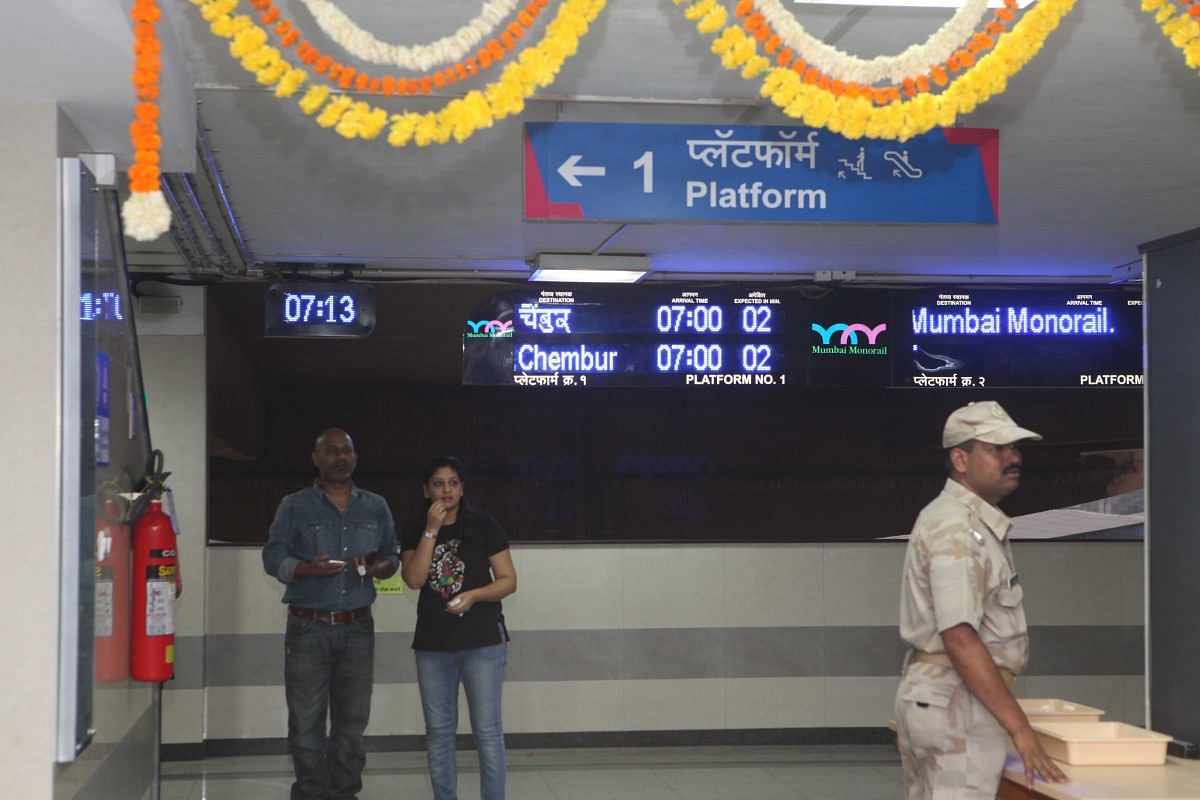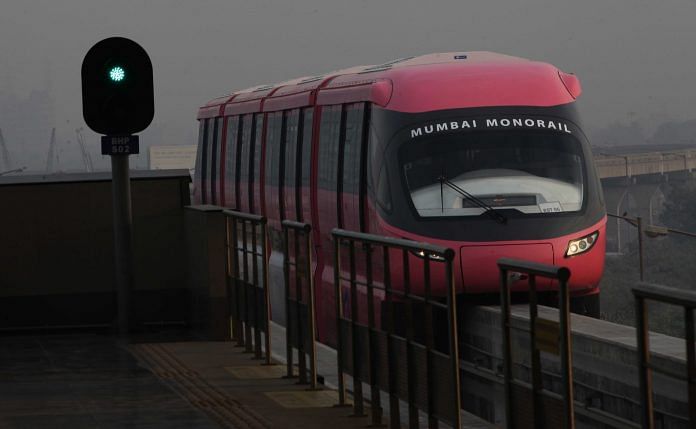At 17,000 a day, ridership is a far cry from glossy estimates of 1.5 lakhs; government not keen on expanding monorail network after failure of the first line.
New Delhi: Launched with much fanfare in 2014, the country’s first monorail has been plagued by a string of accidents, maintenance issues and dismal ridership in the past few years and as such, has become a dog’s breakfast.
In the latest incident on 9 November, a fire broke out at Mysore Colony station in Chembur, damaging two of the four coaches of a monorail rake. Following this, services on the 8.8-km corridor have been withdrawn and the transport system has been lying non-functional for almost a month now.
The Mumbai Metropolitan Region Development Authority (MMRDA), the implementing agency, is not keen on resuming services without first getting hold of the inquiry report into the incident.
“We are going through a difficult phase. We will resume the services once we have the inquiry report and feel it’s safe to start operation with some basic precautions,” MMRDA commissioner U.P.S. Madan told ThePrint.
“If the inquiry report recommends more safety measures, we will have to spend time in putting these in place first,” he added.
From a game changer to a mere joyride
When the erstwhile Congress-NCP government started constructing the monorail in 2009, the 19.5-km corridor from Chembur in the east to Jacob Circle in the south via Wadala was expected to have a ridership of 1.25-3 lakh passengers a day. While the first phase from Chembur to Wadala is ready, work on the second phase has been marred by major delays.
At 17,000 a day, the ridership is a far cry from the glossy estimates. Besides, a small section of locals who use the 8.8-km first phase for short distances, the ridership mostly consists of tourists enchanted by bright blue, pink and green trains snaking over the city on a single beam.
The contractor, Larsen & Toubro in consortium with Malaysia’s Scomi Engineering, is in arbitration with the MMRDA claiming about Rs 1,000 crore in cost escalation over and above the project cost of Rs 2,700 crore for the entire 19.5 km. Meanwhile, poor ridership due to an awkward alignment and delays in commissioning the project has severely hit the maintenance.

“The rate per trip that the MMRDA has to pay the operators was decided in 2008. In 2017, they cannot afford the same rate and are making huge losses on the project because of which the maintenance is suffering,” said an MMRDA official who did not wish to be named.
“We understand that, but we are bound by the contract. They are demanding for the rate per trip to be nearly tripled,” he added.
The authority pays the operator Rs 3,131 per trip.
In three years of operation, monorail services have been disrupted multiple times due to issues such as power outages and technical glitches, with passengers stranded on the elevated trains on a few occasions. The frequency too is poor, both due to low ridership as well as ill-maintained rakes. Moreover, the contractor is yet to bring in five of the 15 rakes promised.
The contractor was not available for comments despite several attempts.
Ministers and MLAs from the current BJP-led government in Maharashtra have criticised the former Congress-NCP regime for “poor planning” that has led to the monorail’s debacle.
Wadala, where the monorail’s car depot is located, was planned to be a major business hub with residential pockets on the lines of the Bandra Kurla Complex. The plan for a Wadala business district is, however, yet to take off due to height restrictions as the region falls in the airport’s funnel area and as much of the land that the MMRDA owns there falls under salt-pans and Coastal Regulation Zone with development restrictions.
What next
MMRDA officials have been pinning their hopes on the commissioning of the second phase of the monorail, from Wadala to Jacob Circle, to boost ridership figures and help make the project financially viable. The alignment of the second phase, which has suffered severe delays, goes through thickly-populated residential and office areas such as Dadar and Lower Parel.
After a number of missed deadlines, the MMRDA is hoping to make the second phase operational by the end of this year. However, the recent fire and halting of services has now further pushed the commissioning of the second phase indefinitely.
With the MMRDA locked in a feud with the current contractors over the cost and abysmal maintenance, the authority has launched a search to rope in a new company to take over the monorail operations and its maintenance. It re-floated tenders after its first attempt did not find any takers.
Madan said, “Even with a new operator, there will be technical and legal complications. The new party coming in will have to be willing to resolve these issues.”
Meanwhile, after the failure of the first line, the government seems to have folded its original plans of building a full-fledged monorail network of about 135 km by 2031.
“Currently, the government is not keen on having any more monorail projects in the future. Monorail in the near future is not really a preferred option,” Madan said.




Dekhne mein khilona lagti hai. The daily ridership of 17,000 is to be seen in the backdrop of the city’s reliable workhorse, the local train which carries upto 4,000 passengers during peak hours, against a designed capacity of 1,400. MMRDA’s grotesque looking elevated walkways, also its scheme for rental housing, have proved to be duds. It was meant to be a planning, not an executing, agency.